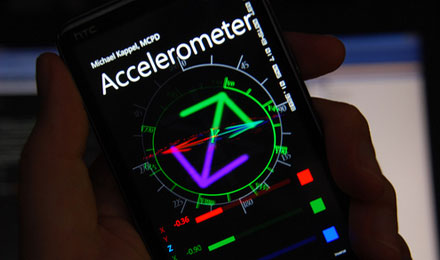
The smartphones of the recent times are all equipped with a technology where the phone can detect the portrait and landscape orientations and change the screen accordingly, popularly called as automatic screen rotation. The sensors used are called as accelerometers. These sensors not only detect the orientation of the screen but also the acceleration of phone and hence the name accelerometer. Accelerometers are essentially capacitance-based sensors. The topic of Capacitor is taken out of the Cambridge-Singapore syllabus since 2007, hence not taught in our A Levels Physics tuition classes but it remains a highly relevant device in our everyday use. How exactly the concept of capacitance is applied to achieve the desired effect is described below.
A capacitor is a device that stores charge. A capacitor when connected to a battery accumulates charge on it and can readily discharge when needed. A typical capacitor consists of two parallel plates separated by a distance; the medium present in between the two plates is called as dielectric. When the two parallel plates are connected to the two terminals of a battery, charge is accumulated on each of these plates. The driving factor here for the charge to be accumulated on the plates is voltage (V). An analogy to visualize this phenomenon is pumping air into a tyre. The capacity of the tyre to hold air can be defined as the volume of air pumped in per unit pressure applied. Similarly capacitance can also be defined as the amount of charge (Q) accumulated on the plates per unit voltage applied (C=Q/V). Capacitance is defined to be proportional to the area of the parallel plates and inversely proportional to the distance between the two plates. The area mentioned not always the area of the plates, for example when two rectangular plates each with a length ‘l’ and width ‘w’ are placed against each other such that their edges overlap then the area is A=l x w. When a rectangular plate is slid past the other by a length ‘x’ then the area is given by A=(l-x) x w, although the area of the plates is l x w. This property of capacitors is used in accelerometers. Capacitors are also used in touch screens and hence the name capacitive touch.
Imagine a construct of capacitor where one of the plates is free to move. Now any force like gravity or sudden jerk can cause the motion of the mobile plate of the capacitor. This movement is associated with a change in the area of the capacitor construct. Now, as explained above, the capacitance of the sensor changes due to change in area. This change in capacitance acts like a signal. If the jerk applied on the phone is of high magnitude then the plates move past each other very fast. This sudden movement initiates a sudden change in the capacitance and depending how fast the capacitance has changed one can estimate the acceleration of the phone.
Now try to keep the phone horizontal and give it a jerk to see if the screen rotation or any other change associated with accelerometers is effected. Note that most of the smartphones provide step count information, open the respective application and move the phone back and forth to see how many false positives are recorded.
